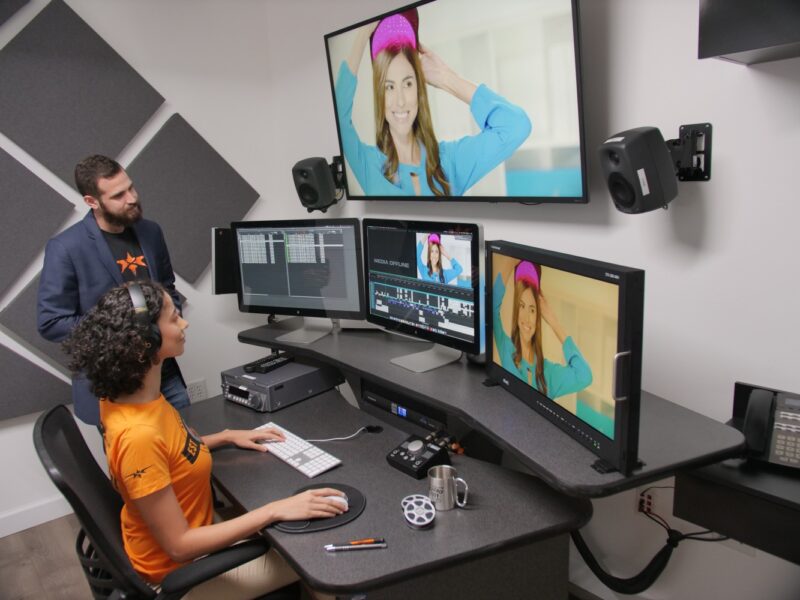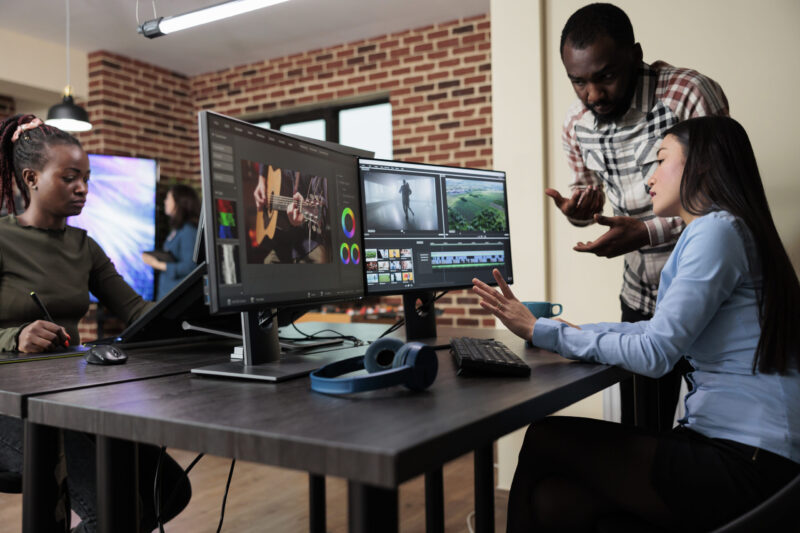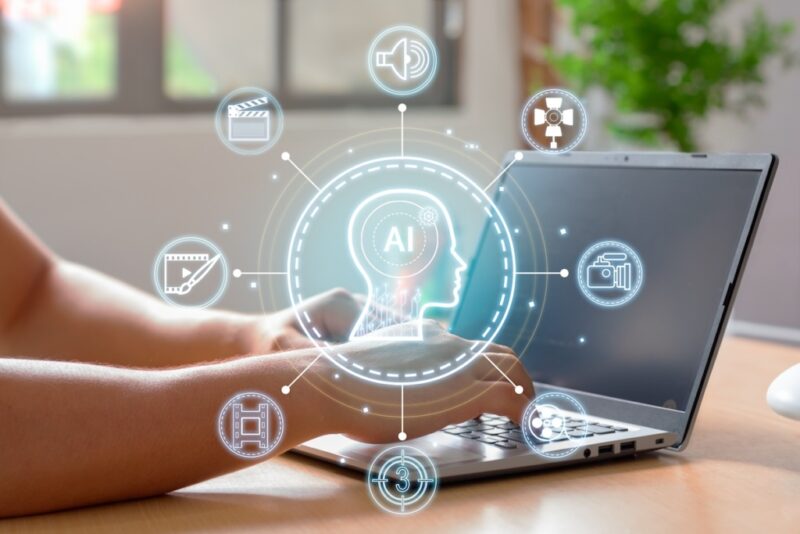In today’s digital world, the rise of Artificial Intelligence (AI) is like a breath of fresh air, especially in how we make and edit videos. As a professional photographer and videographer, I’ve witnessed firsthand the transformative impact of AI on videography.
This new tech wave isn’t just changing how we create video content; it’s also reshaping the skills and creative steps we take in videography to tell our stories. AI’s integration into video editing and production is revolutionizing the industry, bringing forth novel approaches and efficiencies, while also prompting us to ponder what the future might hold.
Bringing New Ideas to Production

The entry of AI into video making has been groundbreaking. Before, making a video needed a lot of people power for planning, filming, and editing afterwards. But now, AI has brought in automation for many production steps, cutting down on the time and effort needed. AI can help with setting up scenes and scripts to figuring out camera positions and lighting. This doesn’t just make the process smoother but also opens new doors for being creative.
Changing How We Edit Videos
Editing videos and videography, a key part of making them ready for viewing, has seen a big shift with AI. Editing used to need a lot of careful work by people for things like cutting, joining, adjusting colors, and adding effects. But AI is learning these skills and can now suggest edits or even do some editing tasks on its own. This lets editors focus more on the creative side of storytelling. Plus, AI can get used to an editor’s style, making a nice teamwork between human creativity and machine efficiency.
Boosting Visual Effects
AI has taken the making of visual effects (VFX) in videos to new heights. Techniques like rotoscoping, where you edit frames one by one for effects, are now faster with AI, saving a lot of time. AI also helps make more lifelike and detailed CGI (Computer-Generated Imagery) by predicting and simulating how things in the real world work and look. This not only makes videos look better but also pushes the limits of what creators can imagine and bring to life on screen.
Revolutionizing Animation
In animation, AI is a game-changer by automating important steps like moving characters and syncing their lips with speech. By learning from lots of data on human movements and expressions, AI can create animations that look natural, which used to take animators a long time. This speeds up making animations and lets characters move and express in more complex and nuanced ways, making stories richer.
Making Content More Personal

AI’s knack for analyzing tons of data and learning from what users do is leading to videos that are more tailored to viewers. Videos can now be edited or even made from scratch to fit what viewers like, making watching videos a more personal experience. This is really useful in marketing and ads, where AI-made content can be customized to click better with certain audiences, making it more effective.
Making Teamwork and Workflow Smoother
AI in video making tools is making teamwork and workflow smoother among creative folks. AI-driven platforms can handle and automate routine tasks like organizing files, changing formats, and rendering. This lets creative pros focus more on the important stuff. Also, AI helps team members work together in real-time, even if they’re far apart, breaking down old barriers in being creative.
Making Video Making More Open to Everyone
One of the big deals with AI in video editing and production is how it’s making creating content more open to everyone. Advanced AI tools are getting easier to use and more available, letting even folks with little tech know-how make great videos. This opens up the creative world to more voices and stories, without needing pricey gear or special skills.
Adding Magic to Sound Design and Music

AI’s touch is also felt in sound design and music for videos. AI can sort through huge libraries of sound effects quickly, helping sound designers find just the right sounds for their projects. In music, AI tools can make new tunes or tweak existing ones to match the video’s vibe, adding a special touch to the visual story. This not only makes working with sound easier but also opens new ways to use audio to bring out emotions and add to the story.
Creating More Engaging and Immersive Experiences
AI is setting the stage for more engaging and immersive video experiences, like what you get with virtual reality (VR) and augmented reality (AR). AI can change stories on the fly based on how viewers interact, making for more personal and gripping narratives. Plus, AI’s ability to make complex 3D worlds in real-time makes VR and AR feel more real, giving viewers a deeper sense of being part of the digital world.
Thinking About the Bigger Picture and What’s Next
The rise of AI in making and editing videos brings lots of perks, but it also makes us think about big questions, like copyright issues, keeping things authentic, and how it might change jobs. The ease of AI in copying styles and making content means we might need to think over copyright rules and ethics to protect original work. Also, as AI takes over some tasks, we have to consider how it might affect jobs in the industry.
As we look to the future, AI in video editing and production is set for even more exciting developments. Advances in machine learning and neural networks could bring about even more sophisticated capabilities, from ultra-realistic virtual settings to stories crafted by AI itself. Yet, the real magic of AI in this field lies in its partnership with human creativity. This combination of human insight and AI efficiency could lead to truly unique creative breakthroughs.
In Conclusion
To wrap it up, AI’s climb in the world of video editing and production is marking a big shift in how we think about, make, and interact with video content. From pioneering new ways in production to fostering engaging and immersive experiences, AI is not just a tool but a creative ally that opens up endless possibilities. As AI tech keeps growing, it promises to bring to light even more ways to tell stories, design sound, and create immersive experiences. However, this journey comes with its own set of challenges, especially when it comes to ethical issues and finding the right balance between automation and the human touch.

